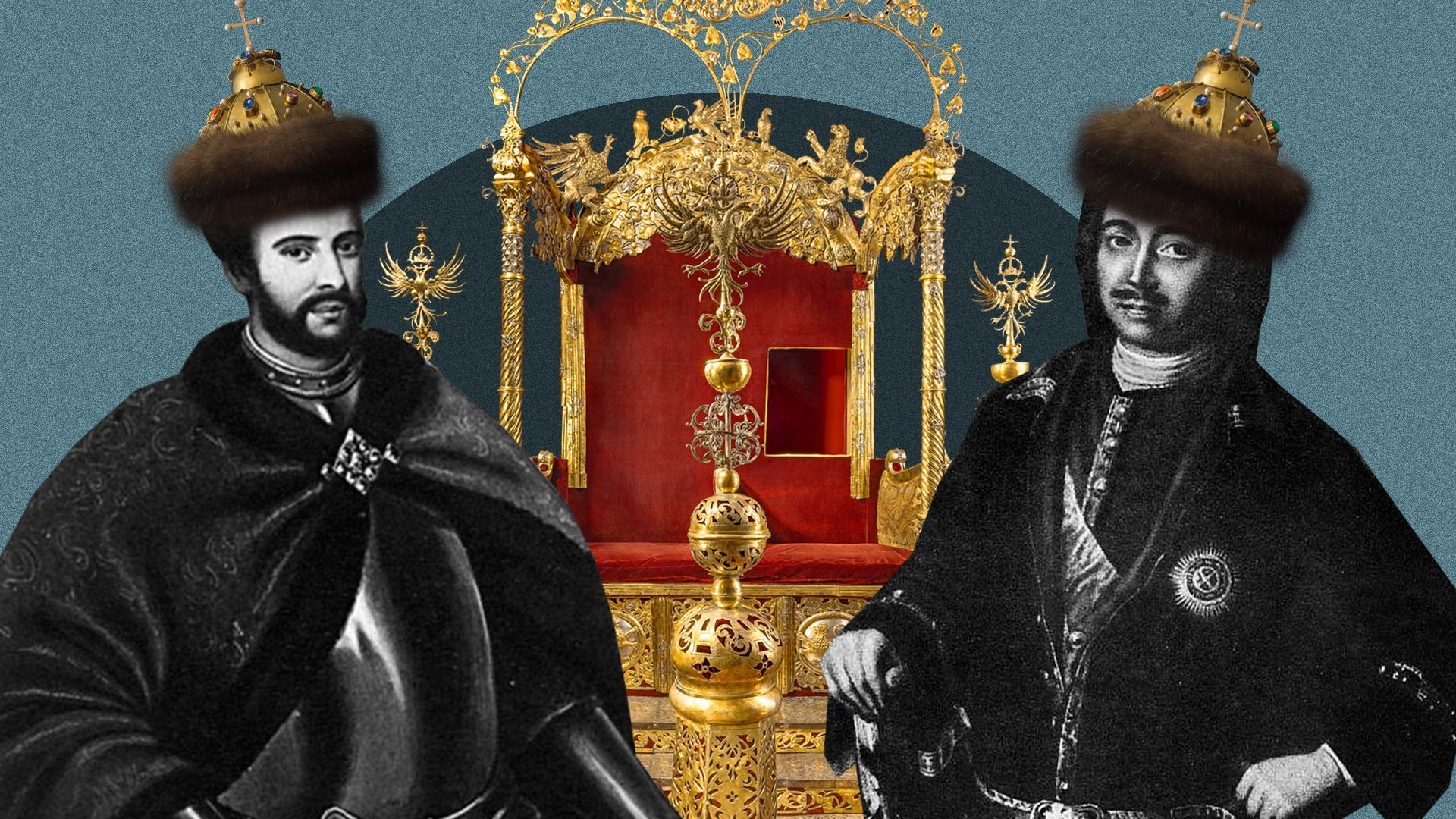
At first sight, it is difficult to picture two people reining 17th-century Russia, with its long autocratic history, simultaneously – without stabbing each other’s backs. But, it was a real case between 1682 – 1696, when two royal brothers, Ivan and Peter, sat on Russia’s throne together and maintained good relations.

Peter the Great and Ivan V
Public domainIn 1683, a Sweden mission visited Moscow and paid a visit to both tsars. Engelbert Kämpfer, a German traveler who was accompanying the Swedes as the ambassador’s secretary, recalled the meeting as follows: “The two tsars were sitting in the Audience Chamber, on two silver chairs, under icons, both dressed in royal clothes shining with gems. The older brother barely moved, with his eyes on the floor, looking at no one. The younger faced everybody openly… and he was speaking quickly.”
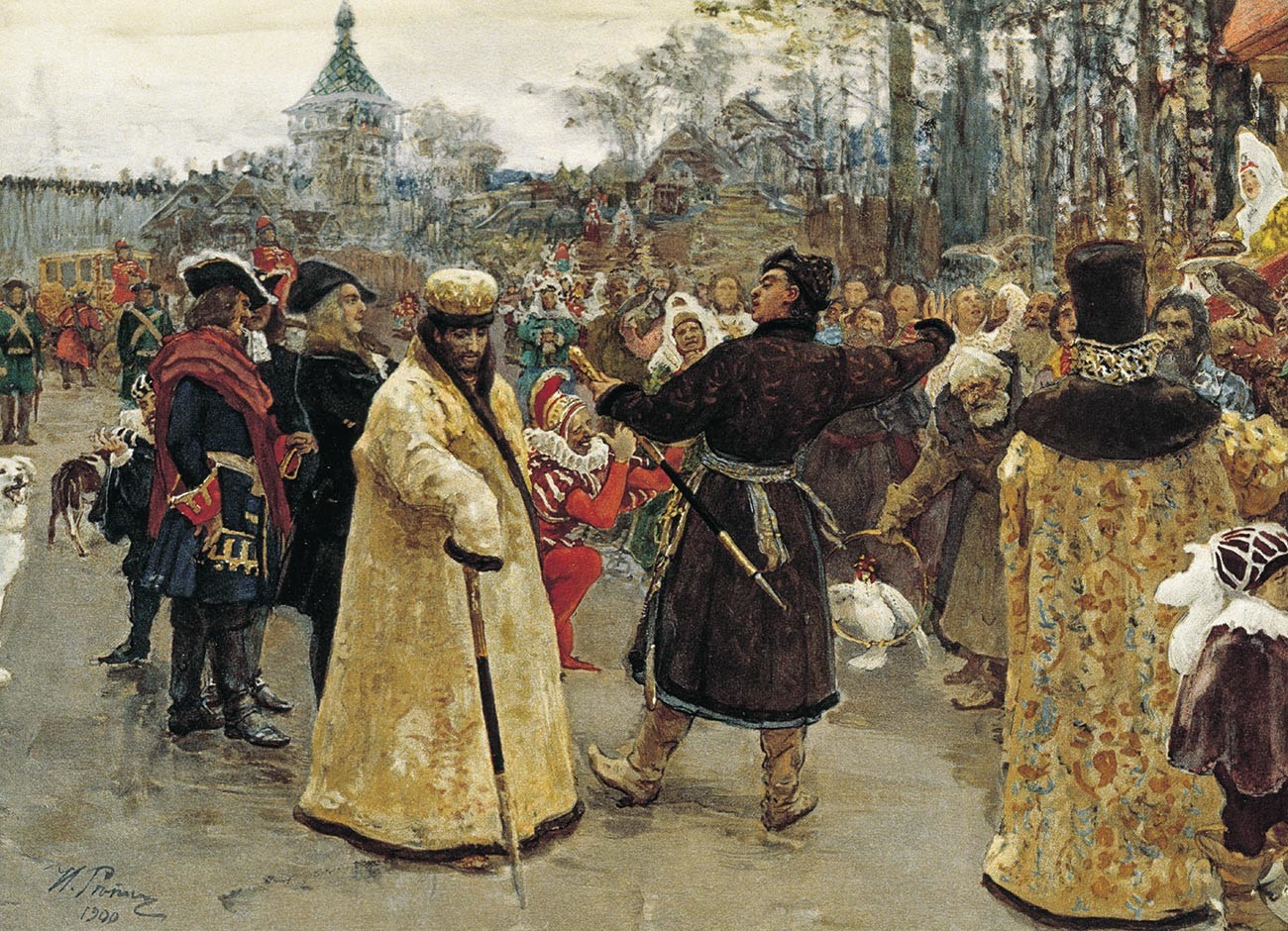
Ilya Repin. Arrival tsars Piotr and Ioann, 1900
Ilya RepinThe younger brother was 11-year-old Peter I (Peter the Great, 1672 – 1725), who, through enormous efforts, would turn Russia into a European empire. The older brother, 16-year-old Ivan V (1666 – 1696) left no palpable trace and now is forgotten. But how did the two get to the throne in the first place?

Double throne for Peter and Ivan
Moscow Kremlin MuseumsFather to both Ivan and Peter, Alexei Mikhailovich (1629 – 1676) ruled Russia for more than 30 years. The tsar had two marriages: first with Maria Miloslavskaya, who gave birth to 13 children, and then, after Maria’s death, with Natalya Naryshkina (3 children). Both the Miloslavskis and the Naryshkins were influential noble houses eager to put their offspring on the throne.
In 1682, after the death of Alexey and Maria’s older son Fyodor III, who had reigned since 1676, the time came to decide who would next sit on Russia’s throne: Maria’s son Ivan (15-year-old) – next in line, but constantly ill and indifferent, or Natalya’s son Peter (10-year-old) – active and ambitious but very young.
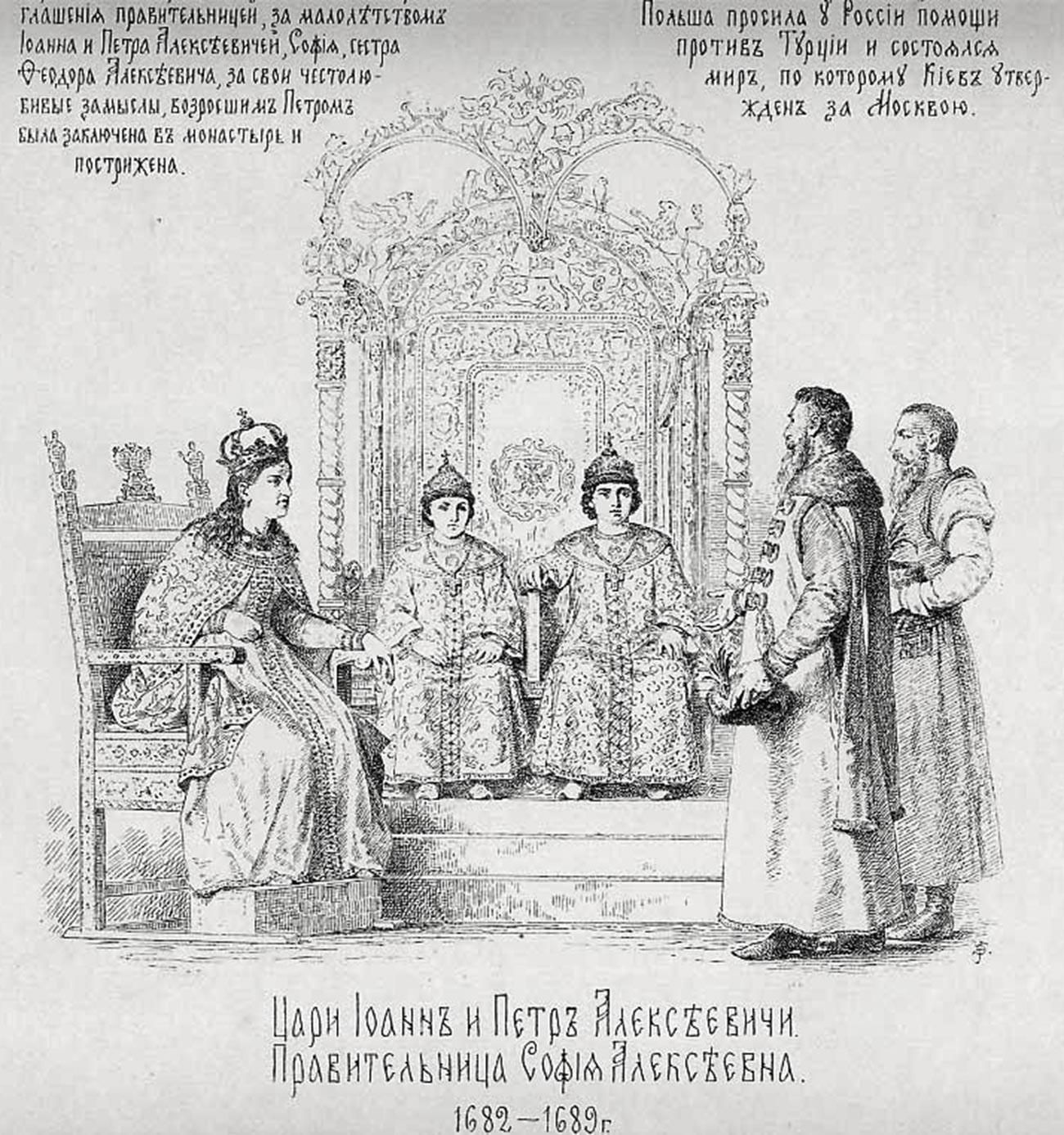
Tars Ivan and Peter and the ruler Sofia, 1682-1689
Public domainAt first, it seemed as though the Naryshkins had got their way with making Peter the tsar – his cause looked stronger. As 19th century historian Sergey Soloviev wrote, “Supporting the untalented, fragile Ivan meant immersing the country into chaos.” On April 27, 1682, Patriarch Joakim, the head of Russian Orthodox Church, declared Peter the tsar.
Nevertheless, the struggle was not over: while Ivan couldn’t care less about the throne, his 25-year-old sister Sofia, who informally led the group of Miloslavskis’ supporters, struck back. “Sofia couldn’t stand the idea of her mother-in-law, whom she hated, [indirectly] becoming the ruler,” Soloviev explained.
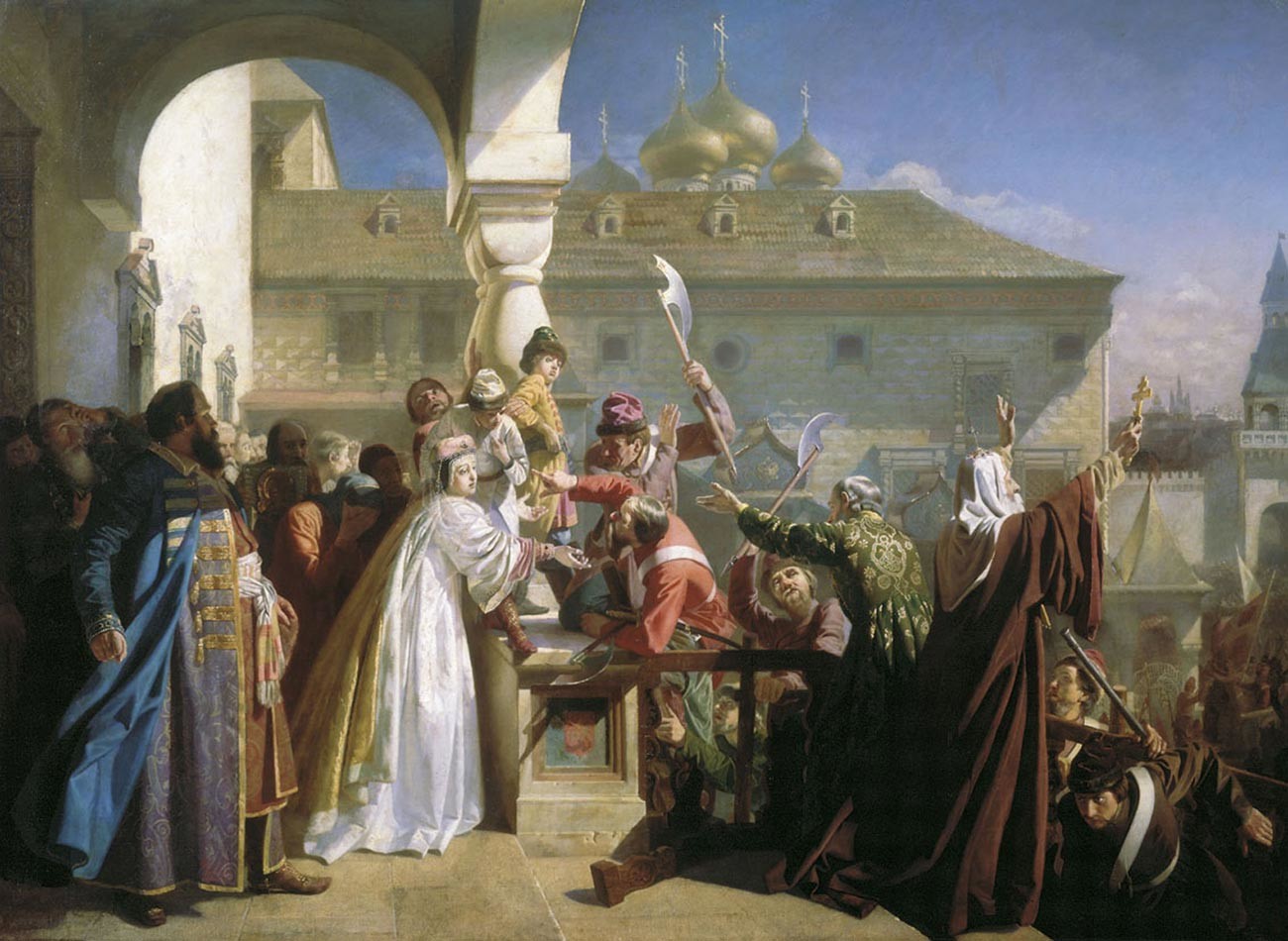
Streltsy Uprising of 1682. Natalia Naryshkina shows Ivan V to the Streltsy in order to prove that he is alive and well, while Patriarch Joachim of Moscow attempts to calm the crowd.
Nikolai Dmitriev-OrenburgskySofia and her supporters outplayed the Naryshkins, provoking an uprising of Streltsy regiments in Moscow. The Streltsy, an influential group of elite infantry, felt unsafe as being stripped of their privileges by the tsars and exploited by their commanders throughout the 17th century, so this audience was easy to ignite. “The Streltsy didn’t understand politics, but they believed that interfering into state affairs was their duty in case the country was leaving the Orthodox, righteous way,” Robert K. Massie, a British historian, wrote in his book Peter the Great: His Life and World.
On May 15, the Streltsy crowded the Kremlin, raged by the rumors of Ivan being killed by the Naryshkins (most likely spread by Sofia’s supporters). And though Ivan appeared before them, the Streltsy carried out a four-day massacre, brutally murdering two of Natalya’s brothers, their advisor Artamon Matveev and many other Boyars (noblemen) loyal to the Naryshkins. Finally, the well-armed crowd imposed their will on the royal family: Peter would remain tsar, but only together with Ivan.
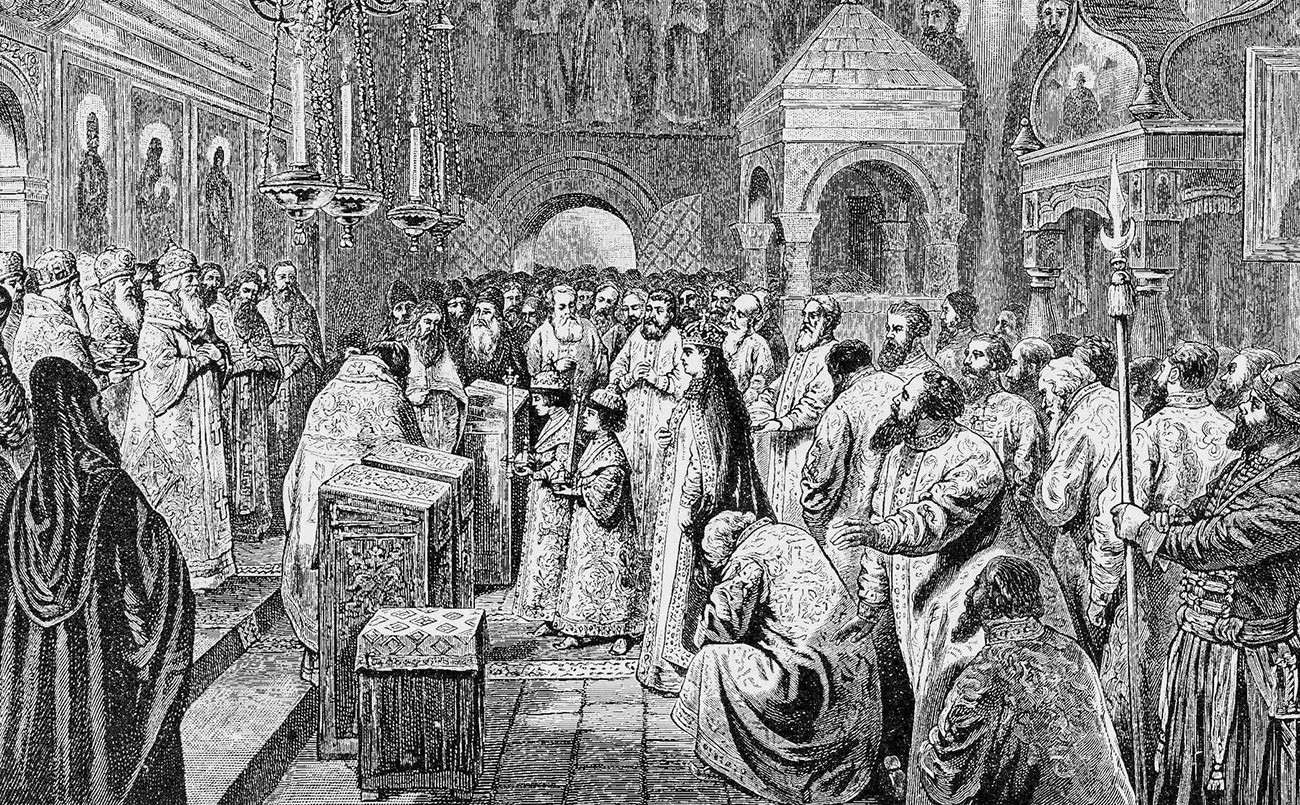
Coronation of tsars Peter and Ioann, 1682. Etching to a painting of K. Brozhe
Public domainOn May 25, just days after the Streltsy covered the Kremlin with blood, the official coronation of both Ivan V and Peter I took place. “That strange, hastily arranged ceremony had no analogues – not only in Russia but in any European monarchy,” Robert K. Massie notes.
They sat on a special two-seat throne and both were crowned with a Monomakh’s Cap, the ancient crown of Russia’s tsars, though after the coronation, Peter, as the younger brother, had to wear the specially made duplicate. Behind the throne, there was a special place for the young tsars’ tutor, who could give them advice on what to do and what to say during the coronation.
Four days later, it was officially announced by the Boyar Duma, pressured by the Streltsy, that Sofia would be a regent – and for the next seven years, it was her and her close circle who really ruled Russia. As for Ivan and Peter, they were “ceremonial” rulers, whose duty was to receive delegations, attend prayers and official fests and so on.
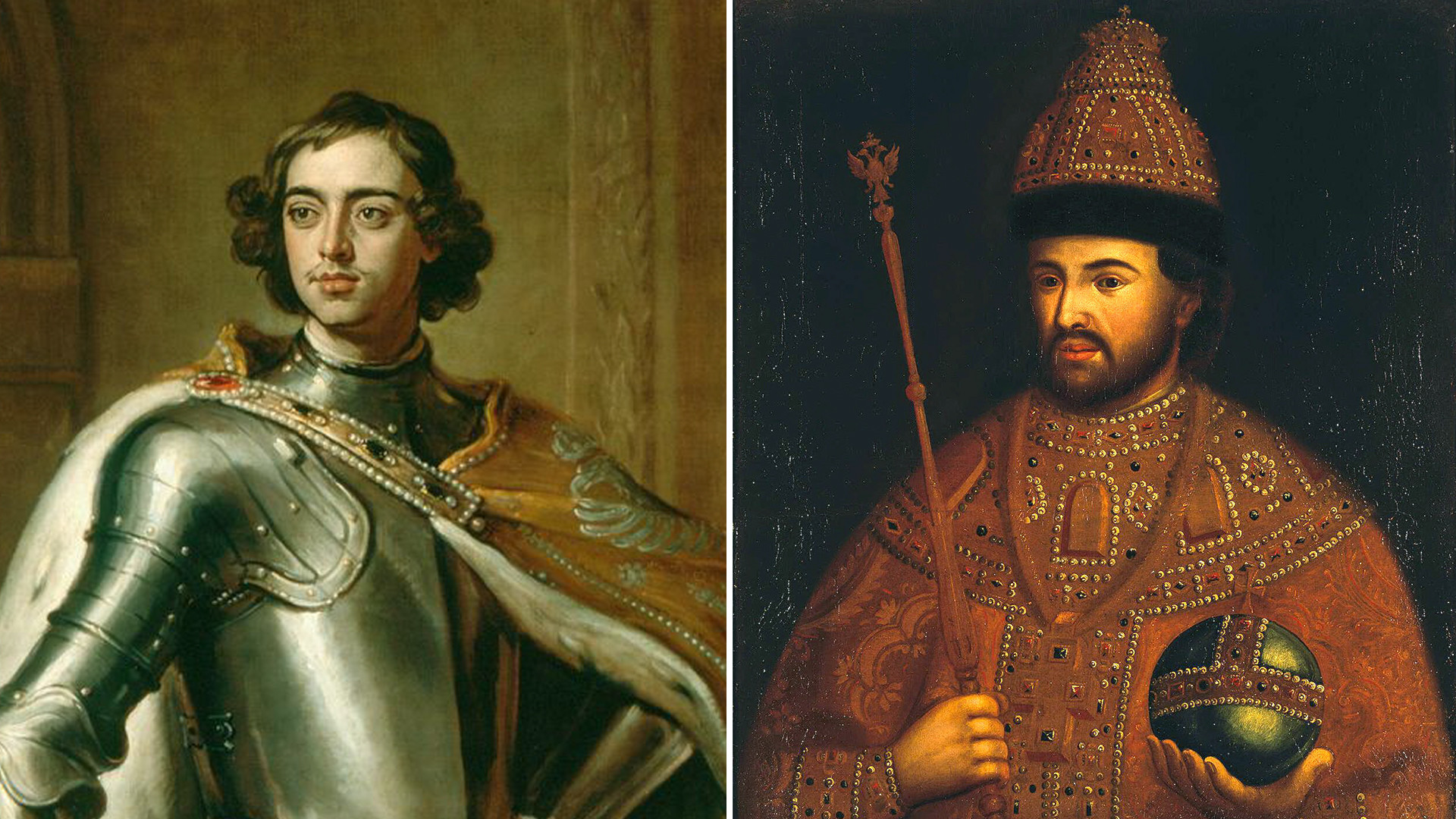
Gottfried Kniller. Peter and Ivan
Hermitage MuseumIn addition, during 1682-1689, Peter spent most of his time outside Moscow, in the Preobrazhenskoe village, along with his mother. The younger tsar, who had witnessed members of his family and their supporters being slaughtered in the Kremlin, had only bitter feelings for the royal court.
“Gory, dreadful scenes before his eyes, excruciating deaths of his family, his mother put in despair, the power being taken from them…” Sergey Soloviev enlists the ghosts of the past, which impacted Peter’s childhood and, most likely, turned him into a ruthless leader. By 1689, 17-year-old Peter would prevail and put his half sister Sofia into a monastery.
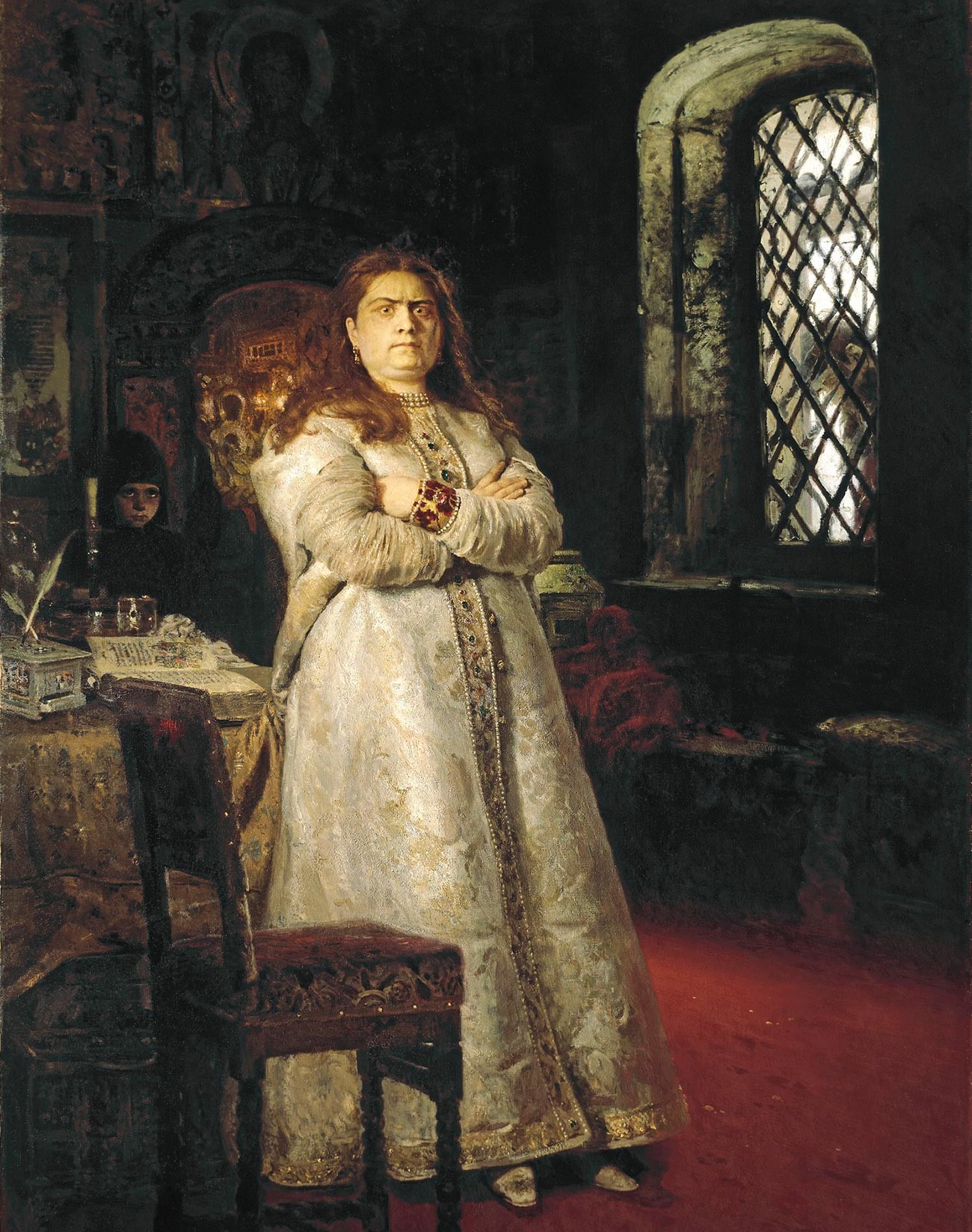
Ilya Repin. Tsarevna Sofya in the Novodevichy Convent
Tretyakov GalleryAs for Ivan, the older brother never showed any interest in state affairs. With his poor health, many historians considered him mentally challenged, though it could have been just rumors. In any case, Peter always treated Ivan with respect – at least officially. After overthrowing Sofia, he wrote to Ivan: “Now, Sire, my brother, it is time for us to reign by ourselves… and I am ready to respect you like my father.”
Ivan never spoke against Peter and formally they continued to rule Russia together, though Ivan was hardly noticeable in politics, overshadowed by his super-active brother. Ivan’s death in 1696, just as quiet as his life was, put an end to the strange period of two tsars reigning Russia simultaneously – and such a situation never occurred again.
If using any of Russia Beyond's content, partly or in full, always provide an active hyperlink to the original material.
Subscribe
to our newsletter!
Get the week's best stories straight to your inbox